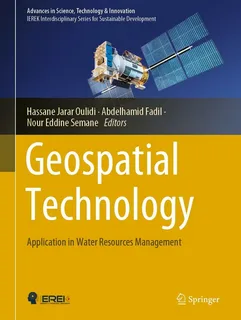Urban planning has always been a complex discipline, balancing the needs of growing populations, environmental sustainability, and infrastructure development. However, the advent of geospatial technology is revolutionizing urban planning by providing planners with precise, real-time data and analytical tools. This transformation is reshaping how cities are designed, managed, and expanded for a smarter, more sustainable future.
What is Geospatial Technology?
Geospatial technology refers to the tools and techniques used to collect, analyze, and visualize geographic information. It encompasses Geographic Information Systems (GIS), Global Positioning Systems (GPS), remote sensing, and spatial data analytics. These technologies enable urban planners to capture detailed spatial data and interpret it to inform decision-making.
How Geospatial Technology is Revolutionizing Urban Planning
Enhanced Data Accuracy and Visualization
One of the primary ways geospatial technology is revolutionizing urban planning is by providing highly accurate spatial data. Urban planners can now create detailed maps and 3D models that reflect real-world conditions. This allows for better visualization of urban landscapes, zoning, land use patterns, and environmental factors, helping stakeholders to understand complex urban challenges clearly.
Improved Infrastructure and Resource Management
Geospatial tools allow for efficient management of infrastructure such as roads, utilities, and public transportation networks. By analyzing spatial data, planners can optimize routes, detect areas with high congestion, and forecast future demands. This technology helps in allocating resources more effectively, minimizing waste, and reducing costs.
Facilitating Smart City Development
Smart cities rely heavily on geospatial technology to integrate data from various urban systems. Real-time spatial data aids in monitoring traffic flow, air quality, emergency response, and energy consumption. The use of geospatial analytics enables urban planners to design responsive environments that enhance the quality of life for residents.
Challenges and Future Prospects
While the benefits are significant, integrating geospatial technology into urban planning also poses challenges. These include data privacy concerns, high costs of advanced systems, and the need for skilled professionals to analyze complex spatial data. Nevertheless, as technology evolves and becomes more accessible, the role of geospatial technology in urban planning is expected to grow exponentially.
Conclusion
The keyword Revolutionizing Urban Planning with Geospatial Technology perfectly encapsulates the transformative impact these tools have on shaping modern cities. By leveraging accurate spatial data, improving resource management, and enabling smart city initiatives, geospatial technology is set to redefine urban development for generations to come. As cities face increasing challenges, adopting these innovations will be crucial for sustainable and efficient urban growth.


